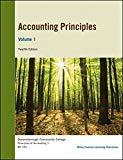
(a)
Journalizing: It is the process of recording the transactions of an organization in a chronological order. Based on these journal entries recorded, the amounts are posted to the relevant ledger accounts.
Accounting rules for journal entries:
- To increase balance of the account: Debit assets, expenses, losses and credit all liabilities, capital, revenue and gains.
- To decrease balance of the account: Credit assets, expenses, losses and debit all liabilities, capital, revenue and gains.
Research and Development Cost: Research and development cost refers to that cost which is incurred by an organization in the process of developing a new product.
Franchises: It refers to the contract which provides the right to franchisee under which he can sell specific products and render various services by utilization of trademarks granted by franchisor.
Amortization: Amortization refers to the amount of
Intangible Assets: Intangible assets refer to those assets owned by the organization which do not have a physical appearance but are used to generate a value for the business.
Main components of balance sheet are assets, liabilities and
To Prepare: The
(b)
To Prepare: The journal entry for amortization
(c)
To Prepare: The intangible assets section in the balance sheet of S Company.
Want to see the full answer?
Check out a sample textbook solution
Chapter 10 Solutions
Accounting Principles 12th Edition
- Please provide the accurate answer to this financial accounting problem using appropriate methods.arrow_forwardPlease help me solve this general accounting question using the right accounting principles.arrow_forwardAccounts Payable A chain of appliance stores, APP Corporation, purchases inventory with a net price of $400,000 each day. The company purchases the inventory under the credit terms of 1/15, net 35. APP always takes the discount but takes the full 15 days to pay its bills. What is the average accounts payable for APP?arrow_forward
- Please explain the solution to this financial accounting problem with accurate principles.arrow_forwardCan you help me solve this general accounting question using valid accounting techniques?arrow_forwardI am trying to find the accurate solution to this general accounting problem with the correct explanation.arrow_forward
- Please provide the correct answer to this general accounting problem using accurate calculations.arrow_forwardPlease explain the solution to this general accounting problem using the correct accounting principles.arrow_forwardCost of Trade Credit A large retailer obtains merchandise under the credit terms of 3/20, net 35, but routinely takes 65 days to pay its bills. (Because the retailer is an important customer, suppliers allow the firm to stretch its credit terms.) What is the retailer's effective cost of trade credit? Assume a 365-day year. Do not round intermediate calculations. Round your answer to two decimal places. 25.10 is incorrect.arrow_forward
- Can you explain the correct approach to solve this general accounting question?arrow_forwardPlease provide the correct answer to this general accounting problem using valid calculations.arrow_forwardPlease provide the accurate answer to this general accounting problem using appropriate methods.arrow_forward

 AccountingAccountingISBN:9781337272094Author:WARREN, Carl S., Reeve, James M., Duchac, Jonathan E.Publisher:Cengage Learning,
AccountingAccountingISBN:9781337272094Author:WARREN, Carl S., Reeve, James M., Duchac, Jonathan E.Publisher:Cengage Learning, Accounting Information SystemsAccountingISBN:9781337619202Author:Hall, James A.Publisher:Cengage Learning,
Accounting Information SystemsAccountingISBN:9781337619202Author:Hall, James A.Publisher:Cengage Learning, Horngren's Cost Accounting: A Managerial Emphasis...AccountingISBN:9780134475585Author:Srikant M. Datar, Madhav V. RajanPublisher:PEARSON
Horngren's Cost Accounting: A Managerial Emphasis...AccountingISBN:9780134475585Author:Srikant M. Datar, Madhav V. RajanPublisher:PEARSON Intermediate AccountingAccountingISBN:9781259722660Author:J. David Spiceland, Mark W. Nelson, Wayne M ThomasPublisher:McGraw-Hill Education
Intermediate AccountingAccountingISBN:9781259722660Author:J. David Spiceland, Mark W. Nelson, Wayne M ThomasPublisher:McGraw-Hill Education Financial and Managerial AccountingAccountingISBN:9781259726705Author:John J Wild, Ken W. Shaw, Barbara Chiappetta Fundamental Accounting PrinciplesPublisher:McGraw-Hill Education
Financial and Managerial AccountingAccountingISBN:9781259726705Author:John J Wild, Ken W. Shaw, Barbara Chiappetta Fundamental Accounting PrinciplesPublisher:McGraw-Hill Education





